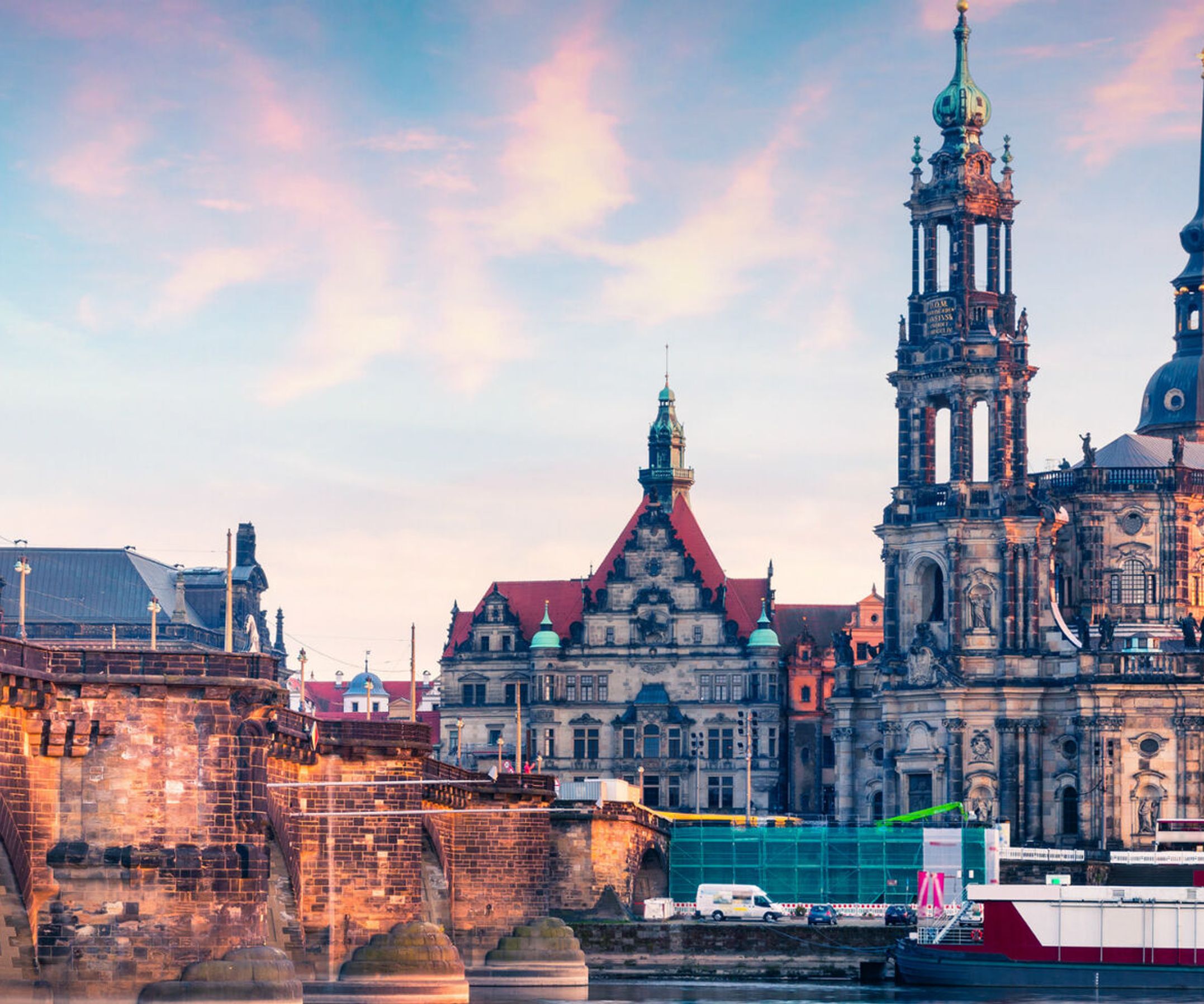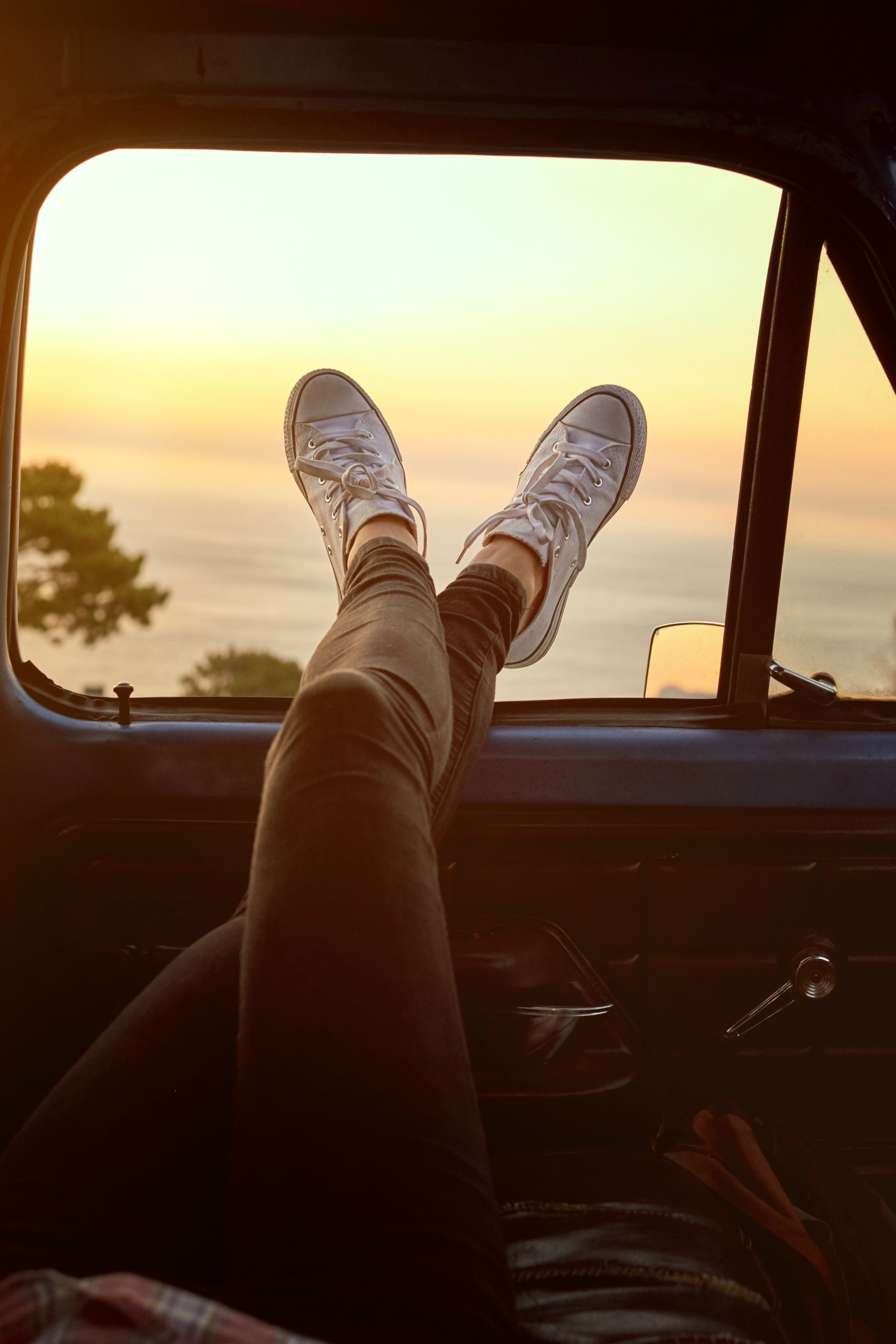Dresden-Leipzig-Magdeburg
Suggested itinerary
2 days in Dresden + 1 day in the Dresden Elbeland + 2 days in Leipzig + 1 day in Dessau + 2 days in Magdeburg
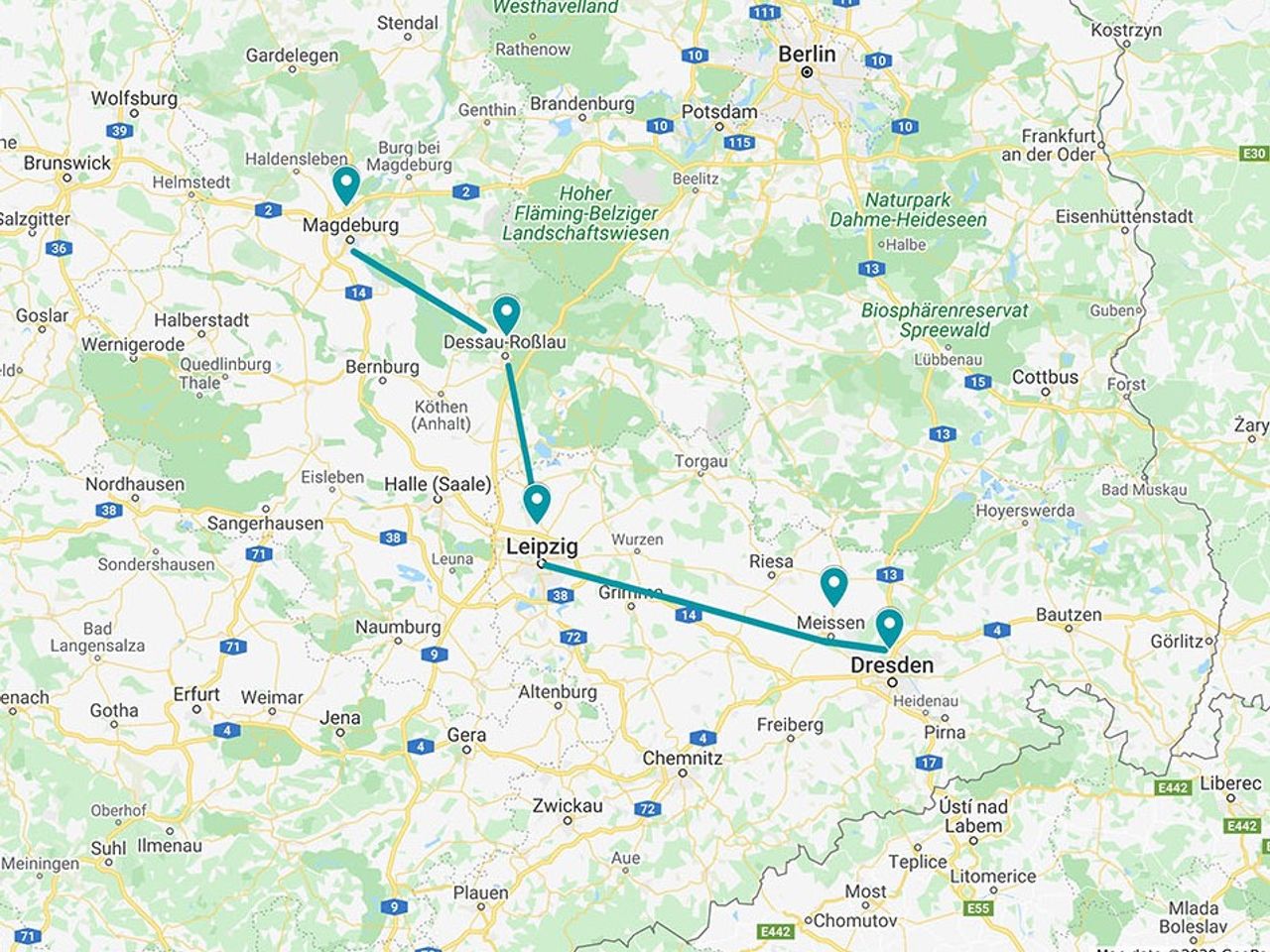
Route:
Dresden – Meißen (approx. 45 min by car and train)
Meißen – Leipzig (approx. 1.5 h by car and train)
Leipzig – Dessau (approx. 1 h by car and train)
Dessau – Magdeburg (approx. 1 h by car/1.5 h by train)
Please check the current travel regulations in your state/country.
By the way, our flexible rebooking options mean you still have plenty of possibilities even if your plans change at short notice!
Stop 1 – Dresden
Stop 1 – Dresden
FROM THE OLD...
Set off – preferably on foot – on a classic city tour of the Innere Altstadt. Here, you’ll find most of Dresden’s well-known landmarks: the Frauenkirche, Dresden Castle, the Stallhof and the Fürstenzug, a 101-metre mural depicting the history of the rulers of Saxony, the Neumarkt, the Semperoper, one of the most beautiful opera houses in the world, the Zwinger, which is home to the famous Old Masters Picture Gallery and the Dresden Porcelain Collection.
...TO THE NEW(ISH)
If you cross the Augustus Bridge, you’ll find yourself in the trendy district of Neustadt, a charming combination of old and restored buildings, narrow alleys and crooked courtyards full of cafés, bars and shops that range from stylish and sophisticated to showy and extravagant. Granted, not everything here is brand new. As soon as you arrive, you’re greeted by the Golden Rider, a statue of Augustus the Strong, who was Elector of Saxony and King of Poland. It was actually Augustus and his son who built the magnificent baroque buildings and amassed the great art collections that earned Dresden the moniker of ‘Florence on the Elbe’.
Around the corner, near Königsstraße, you will find the Baroque District, which happens to be one of the most beautiful areas of the city. You can also visit the four-floor Neustädter Markthalle, regarded as the most beautiful market hall in Germany, and enjoy a modern shopping experience in a historic setting. And if you like wandering around and browsing, it’s also worth paying a visit to the Kunsthofpassage and exploring its little restaurants and craft shops, which were opened more than 20 years ago to revive the disused courtyards.
A little further east, but still strictly speaking on this side of the Elbe, you’ll find the Blue Wonder – or the Loschwitz Bridge, which has connected the affluent districts of Loschwitz and Blasewitz since 1893. When it was built, it was considered an astounding technological feat – and was named the ‘Blue Wonder’ because despite having been painted green, its colour changed to blue a few weeks later.
NOSTALGIC TRAVEL
Funicular Railway: the Dresden Funicular Railway has been running since 1895 from Körnerplatz in the higher-lying, upmarket district of Weißer Hirsch, which not only boasts impressive architecture but also a stunning view of the city.
Suspension Railway: near Körnerplatz, you’ll also find the lower station of the world’s oldest suspension railway, which has been transporting passengers on a four-and-a-half-minute ride up to the upper station ‘Schönen Aussicht’ since 1901.
Trabi Safari: want to jet through Dresden behind the wheel of a Trabant on a nostalgic city tour? Then step on it – click here to find out more!
TOWERING ABOVE
Want to look at a brilliant view of the city from above? Here’s just a few of the panoramic views Dresden has to offer:
Tower of the Frauenkirche: the classic option, at 67 metres high
Tower of the Dreikönigskirche, 87 metres with a view of the opposite bank of the Elbe
Tower of the Kreuzkirche, which has already been destroyed five times, 92 metres
GREEN DRESDEN
More than 60% of the city is covered with woodland green areas, making Dresden one of the greenest cities in Europe. With 623 parks and green spaces across a total of 327 hectares, there’s a perfect, relaxing spot for everyone; e.g. the Blüherpark, the ‘Bürgerwiese’ park, the Grand Garden of Dresden…here’s an overview
The region surrounding Dresden is also very green: Dresden Heath, formerly the electoral hunting grounds, now serves as the local recreation area for Dresden residents. And it’s also just a stone’s throw from the city centre, making it the perfect location for an idyllic little hike! Or you could head a little further south of Dresden to the picturesque Rabenauer Grund nature reserve (30 min by car/1 h by public transport) and discover some of its strange landmarks, such as the ‘Nadelöhr’ (eye of the needle) the ‘Einsiedlerstein’ (hermit’s stone) and the ‘Großvaterstuhl’ (grandfather’s chair).
HISTORICAL PERSPECTIVES
The Canaletto View: if you were to look upriver from the Neustadt bank of the Elbe at the Dresden skyline, with the Hofkirche and Frauenkirche, you would be looking at the famous ‘Canaletto view’. This view owes its name to Canaletto’s 1748 painting, which you can view in the nearby Old Masters Picture Gallery. The painter Bernardo Bellotto, known as Canaletto, was renowned at that time for his extremely realistic city paintings. He also painted Vienna, Turin and Warsaw.
Pillnitz ruins: these ruins are located on a hill in the forest about 500 metres from the park walls of Pillnitz Castle, on the south-western slope of the castle hill above Friedrichsgrund. Follow a serpentine path for 10 minutes and you’ll reach the artificial ruins, which were built in 1780 as a hiking destination for the then Elector and later King of Saxony Frederick Augustus III. These ruins are worth a visit for the view – especially if you go on a balmy summer evening and watch the city light up.
DID YOU KNOW...
that Dresden has a varied and exciting museum scene? Of course you did! But did you also know that it has been home to the German Hygiene Museum since 1912? This museum is worth a visit at any time, but especially right now, in light of recent events.
that Germany’s biggest open-air cinema festival, ‘Filmnächte am Elbufer’, is back? Click here to view the programme.
Stopover – Dresden Elbeland and Meißen
Stopover – Dresden Elbeland and Meißen
Stop 2
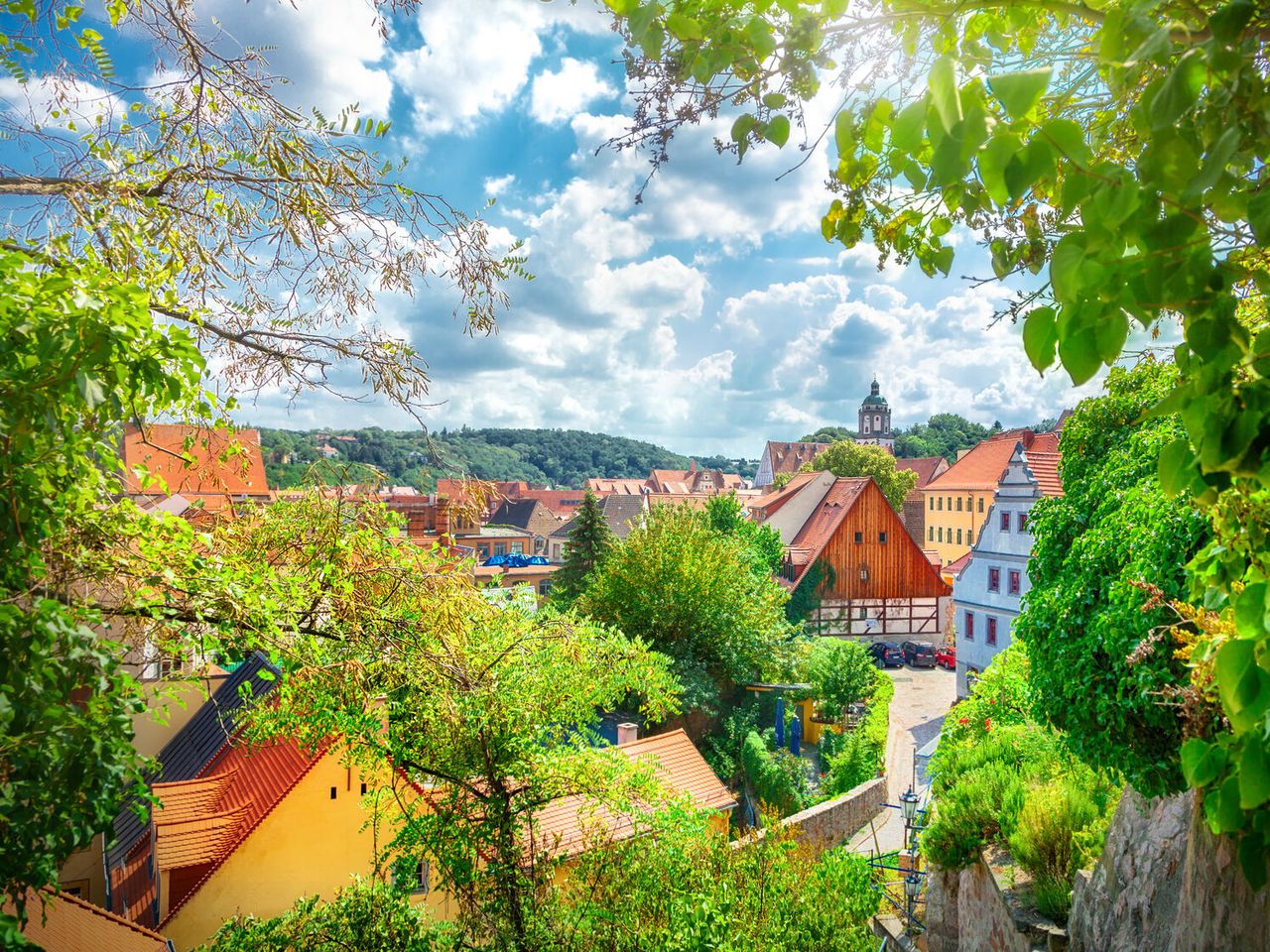
With its picturesque landscapes, the region surrounding Dresden is perfect for...
- Vineyard hopping along the slopes of the Elbe in Radebeul, which are part of the 60-km Saxon Wine Route. On this tour of the region’s vineyards, you not only get to try Riesling, Pinot Blanc and Pinot Gris, but also the speciality of the Elbeland, the ‘Schielder’, a wine made from red and white grapes.
- Exploring palaces and castles: the area between Dresden and Leipzig is teeming with them. It is home, for instance, to Moritzburg Castle, which is considered one of the most beautiful castles in all of Germany and is also where the classic film Three Wishes for Cinderella was shot. There’s also the 18th century Pillnitz Castle, with its park and Riverside Palace directly on the Elbe. Not forgetting the state winery Wackerbarth Castle with its baroque gardens – where you can experience local culture and treat yourself to some fine wine all in one day.
- Paying a visit to Meißen: the old town with its cathedral, the Meißen porcelain factory and the Albrechtsburg castle are three excellent reasons to take a detour here.
Stop 2 - Leipzig
Stop 2 - Leipzig
CENTRAL LOCATION
Every one of our three Motel One hotels in Leipzig is located centrally, so whichever one you stay at, you’ll be able to explore the entire city centre in no time! Just round the corner, you’ll find the Augustusplatz with the Gewandhaus concert hall, the Leipzig Opera, the Demokratieglocke memorial, St. Nicholas Church, the Leipzig marketplace with the Old Town Hall and City-Hochhaus and the Panorama Tower. Leipzig’s tallest viewing platform (at 142.5 metres), also known as the ‘steiler Zahn’ (sharp tooth) due to its shape, is now home to the public broadcaster Mitteldeutscher Rundfunk and a panoramic restaurant that offers a phenomenal... well... panoramic views!
BUILT ON THE WATER
Leipzig City Harbour: from the harbour, you can explore Leipzig and its water-rich surroundings either by canoe, kayak or dragon boat, take a boat tour into Leipzig’s Neuseenland or cycle along the bike trails bordering the water – or perhaps you would prefer a game of beach volleyball and a cocktail at the beach bar?
And speaking of Leipzig’s Neuseenland, located in the south of Leipzig is the lake district, which consists of more than 19 lakes and is still growing. There are so many lakes to choose from – where you go next is up to you!
The Sachsenbrücke bridge is in the middle of Clara-Zetkin Park, Leipzig’s largest city park – it’s a great place to stop and seek out the perfect spot by the water to enjoy your ice cream.
Plagwitz, also known as ‘Hypezig’, is a charming district with a combination of villas and old factories, lots of green space and lots of water: here, you can enjoy a wonderful walk along the Karl-Heine Canal or the White Elster, or explore them by tour boat, kayak, SUP or rowing boat. This district is full of boat hire companies .
If you prefer dry land, you can also cycle along the White Elster bike trail – the entire trail is a straight line and it is rumoured to be one of the most beautiful bike trails in Leipzig. It passes the Sachsenbrücke, the Palmengartenwehr, the Richard-Wagner Hain, Lake Auensee – and then just ride straight on for 250 km!
THREE PHOTO SPOTS:
City Tunnel stop at Bayerischen Bahnhof
Aurelienstraße by Karl-Heine Canal
Könneritzbrücke
THE PERFECT STROLL
Mädler Passage: in the past, Leipzig’s system of arcades hosted a wide range of trade fairs. This five-floor arcade, built in 1912, hosted porcelain, leather and wine fairs, and to this day you can buy all sorts of exquisite goods on the shopping mile.
On Karl-Liebknecht-Straße also known as ‘KarLi’, there are said to be more bars than apartments. Fancy a nightcap?
Waldstraßenviertel: a particular highlight for architecture fans, as the district’s architectural history dates all the way back to 1830. Located north-west of the city centre, this district is the largest complete area of ‘Gründerzeit’ buildings still preserved in Europe and is one of the most splendid districts in Leipzig.
Karl-Heine-Straße: Karl-Heine-Straße measures almost two kilometres, stretching from Clara Zetkin Park to Plagwitz railway station, featuring a combination of cultural and culinary attractions along its length. It is the beating heart of western Leipzig. No matter what time it is, there’s always something going on!
Leipzig Südfriedhof: this cemetery, consecrated in 1886, is one of the largest and most beautiful of its kind in Europe and is known for its idyllic atmosphere. With its spacious grounds, outstanding architecture and gravestones that hold a great deal of significance in terms of art history, this park cemetery will be an unexpected and impressive highlight of your visit.
NATURAL SETTINGS WITH GREAT VIEWS
Leipzig Riverside Forest: one of the largest areas of riparian woodland in central Europe with the Rosental observation deck (‘Wackelturm’), which offers a clear view of Leipzig.
Fockeberg: from the top of this 153-metre hill, which is actually an artificial mound constructed from wartime rubble, visitors can enjoy a terrific view of the Leipzig skyline. It is surrounded by lush green meadows, thick shrubbery and tall trees (15 min by car/30 min by public transport).
Monument to the Battle of the Nations and Wilhelm-Kuelz Park: visitors can climb more than 364 steps up to the observation deck of this famous monument, where there is a panoramic view of Leipzig, before heading down to relax in the shade of Wilhelm-Kuelz Park with its unusually dense tree population.
Bistumshöhe and Cospudener See: whether you walk, cycle or roller-blade – a lap around the ‘Cossi’ is sure to make your day (check out the little bays on the western beach!). Then follow the signposted turn-off from the main path to the Bistumshöhe, an observation tower that offers a picturesque view of Zwenkau and the Cospudener See (20 min by car/45 min by public transport).
Stopover – Dessau and Pömmelte
Stopover – Dessau and Pömmelte
Stop 2
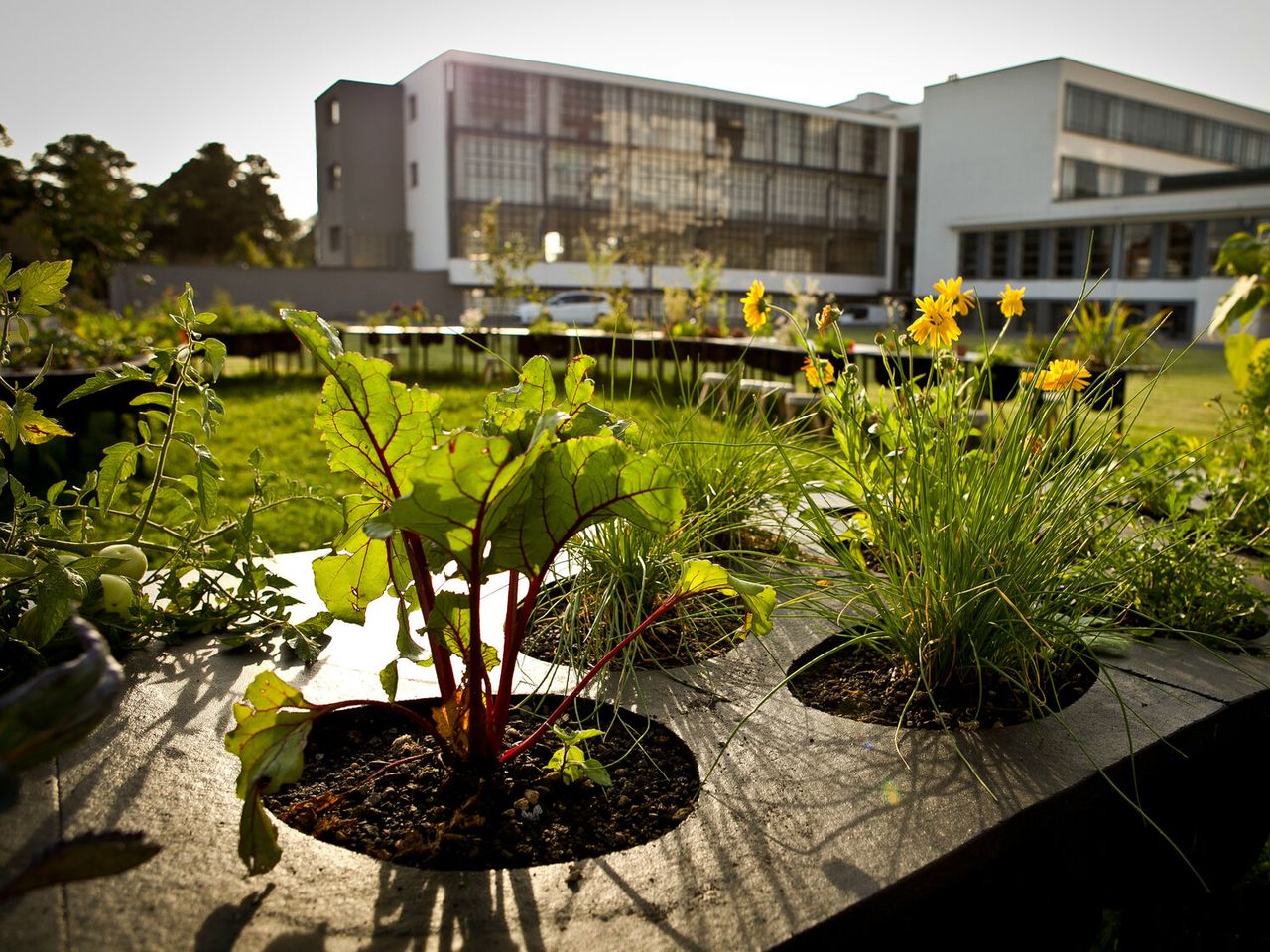
Experience three exciting slices of German history:
- Pömmelte Neolithic circular enclosure: a reconstructed circular enclosure, dating back more than 4,000 years to the Stone Age, with seven rings of palisades, ditches and ramparts and an outer diameter of 115 metres. You can visit this elaborate site of worship, which probably served as a central shrine for various rituals, free of charge.
- The heart of Bauhaus: the Bauhaus was based in Dessau for almost seven years from 1925 to 1932, and this period was also the heyday of Bauhaus architecture. That’s why Dessau still has numerous Bauhaus buildings – the Bauhaus Building, the Masters’ Houses, the Dessau-Törten estate, the Kornhaus restaurant, Fieger House, the Steel House and the Employment Office. The Bauhaus Museum Dessau was opened in September 2019 to mark the centenary of the Bauhaus’s foundation. It houses about 49,000 catalogued exhibits – the second largest collection of Bauhaus-related objects in the world.
- Technikmuseum Hugo Junkers: based in a renovated 1950s workshop (which has 4,200 m² of exhibition space) on the site of the former Junkers aircraft factory, this museum focuses on the life and works of engineer, entrepreneur and inventor Hugo Junkers.
Stop 3 – Magdeburg
Stop 3 – Magdeburg
A PERFECT BASE
In our Motel One Magdeburg, you can truly experience the city rather than just watching from the sidelines. It is located next to some key landmarks, with the Magdeburg Cathedral of Saints Maurice and Catherinea on one side and Magdeburg Art Museum on the other, along with the ‘Unser Lieben Frauen’ monastery. The beating heart of the city, comprising the Old Market, the Town Hall and Johanniskirche, is located just a short walk away.
And while you’re out and about, keep an eye out for the architecture – there are nine architectural styles to discover in Magdeburg! From the Romanesque Monastery of Our Lady and the Gothic cathedral to the ‘Gründerzeit’ buildings on Hasselbachplatz and Hundertwasser’s Green Citadel – the last completed project by Friedensreich Hundertwasser, which he intended as a statement against the classical rules of modern architecture.
GREEN AREAS
The Elbauenpark, formerly the site of the BUGA horticulture show, has a wide range of exciting activities on offer: a butterfly house, a wildlife reserve, sports facilities, a climbing park, as well as Ziplining. Thanks to the park’s location by the Elbe, visitors can also enjoy a perfect panoramic view of the city centre from numerous viewing platforms; for example, from the Millennium Tower.
Rotehorn The Stadtpark is located in the centre of Magdeburg on an island in the Elbe opposite the Old Town. With its vast meadows and woodland, it has all the green space the heart desires. There is also a lake where you can hire boats and an observation tower with a good view of the city.
ON THE WATER
The ElbeCycle Route stretches from Prague to Hamburg and runs right through Magdeburg for 20 km. You can either follow this trail or take one of the many other routes to explore Magdeburg and the surrounding region. Left your bike at home? No problem! There are several bike hire companies in the area.
Magdeburg is located at the intersection of the Elbe, the Elbe Havel Canal and the Mittelland Canal, so when you’re in this city, you’re never far from the water. It’s definitely worth taking a bike ride to the Magdeburg Waterway Junction (approx. 1 h). Europe’s longest canal bridge, measuring 918 metres, carries the Mittelland Canal over the Elbe. With its impressive hoist and lock contraptions, this is a particular highlight for technology fans and boat spotters.
The Weißen Flotte boat trips can take you upstream past the cathedral and Rotehornspitze, or downstream towards the Waterway Junction. The downstream journey also includes a lock.
CULINARY HIGHLIGHTS
If you’ve always wanted to know what it’s like to dine in a church, you can stop for a meal in ‘Die Kirche’ in the former St. Immanuelkirche, built in 1832.
One of the region’s local gins is brewed nearby in the small town of Loburg (approx. 30 min by car). You can sample this local gin in our Motel One bar.
A touch of Africa is present in Nedlitz, 10 minutes from Loburg: an ostrich farm, where you can see the animals and buy products in the farm shop.
Your plans have changed? Our flexible booking options mean you have plenty of possibilities open to you.
Your plans have changed? Our flexible booking options mean you have plenty of possibilities open to you.
